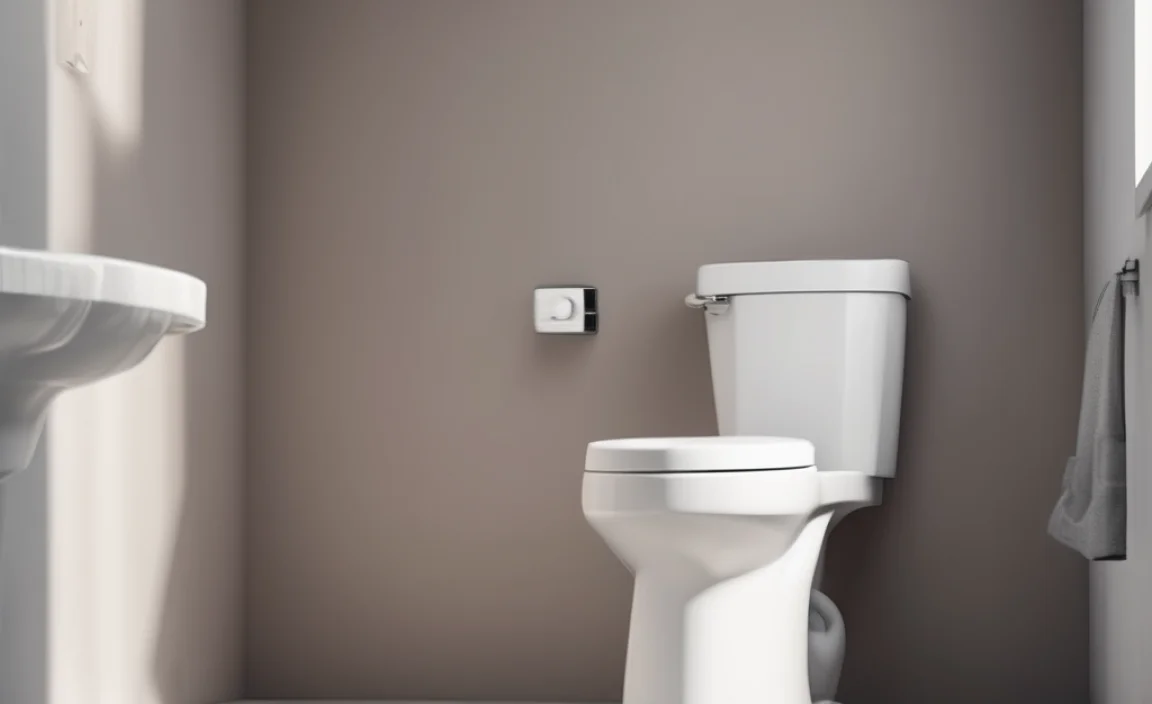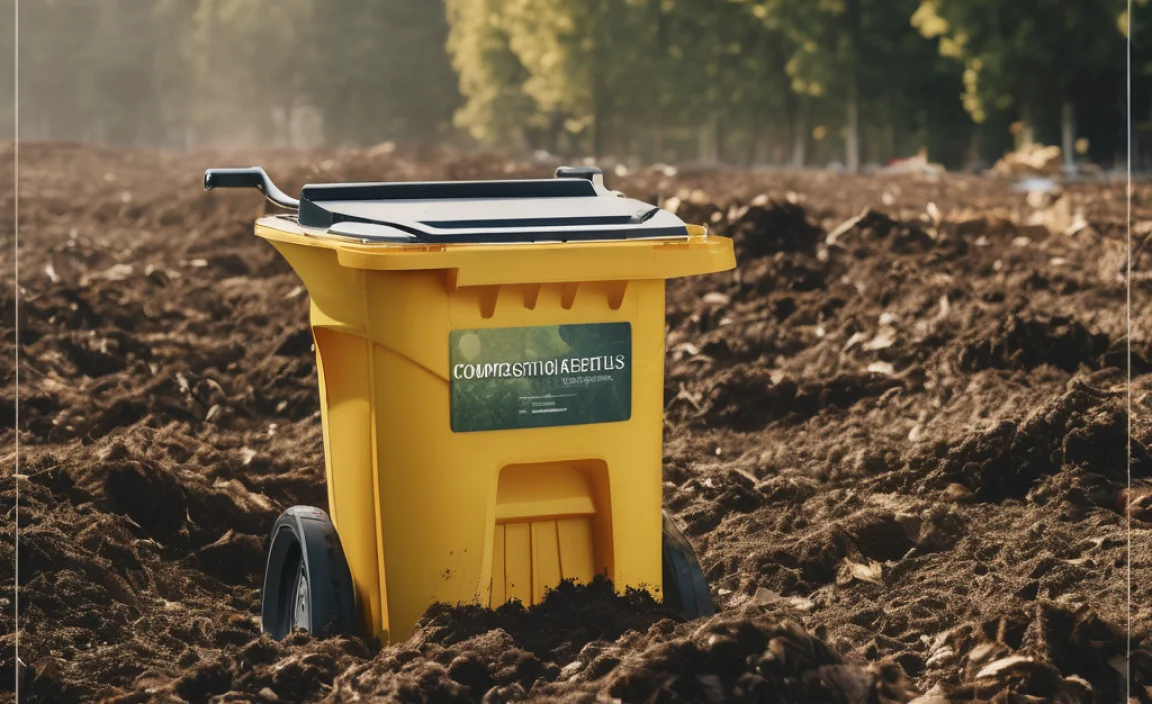Quick Summary: A toilet that randomly runs usually means water is leaking from the tank into the bowl. The flapper valve is the most common culprit. It might be worn out, misaligned, or obstructed by debris. Adjusting the chain, cleaning the flapper, or replacing it are often simple fixes. Sometimes, the fill valve is the issue, causing the tank to overfill and leak into the overflow tube.
Is your toilet acting like it has a mind of its own, randomly running and wasting water? It’s a common problem, and thankfully, it’s often easy to fix. A running toilet can be annoying and costly, but don’t worry! We’ll walk you through the most likely causes and how to address them, step by step. You’ll save water and money in no time.
Ready to get started? We’ll cover everything from the flapper valve to the fill valve, and even show you how to adjust the chain. Let’s get your toilet running smoothly again!
Understanding Why Your Toilet Runs Randomly

A toilet that runs randomly is usually telling you something’s amiss inside the tank. The good news is that most of the time, the problem is easy to diagnose and fix yourself. Here’s a breakdown of the most common reasons your toilet might be running on its own:
- Flapper Valve Issues: The flapper is a rubber or silicone seal at the bottom of the tank. It lifts to allow water into the bowl during a flush and then drops back down to seal the tank. If it’s old, cracked, or covered in mineral deposits, it won’t seal properly.
- Fill Valve Problems: The fill valve controls the water that refills the tank after a flush. If it’s not shutting off completely, the water level can rise too high and spill into the overflow tube, causing the toilet to run.
- Chain Troubles: The chain connects the flush lever to the flapper. If it’s too long, it can get caught under the flapper, preventing a good seal. If it’s too short, it might not lift the flapper high enough for a complete flush.
- Water Level Too High: If the water level in the tank is set too high, water will continuously drain into the overflow tube.
- Mineral Buildup: Hard water can leave mineral deposits on various parts, like the flapper and the flush valve seat, which can interfere with their function.
Step-by-Step Guide to Diagnosing and Fixing a Running Toilet

Let’s get our hands dirty! Follow these steps to pinpoint the cause of your running toilet and get it fixed. Remember to turn off the water supply to the toilet before starting any repairs.
Step 1: Turn Off the Water Supply
Locate the shut-off valve behind the toilet, usually near the floor. Turn it clockwise until it’s completely closed. This prevents more water from entering the tank while you’re working.
Step 2: Remove the Tank Lid
Carefully lift the tank lid and set it aside in a safe place where it won’t be knocked over or broken. Now you can see the inner workings of your toilet tank.
Step 3: Observe the Water Level
Is the water level in the tank close to the top of the overflow tube? If so, the fill valve might be the problem. If the water level is lower, the flapper is more likely the culprit.
Step 4: Check the Flapper Valve
The flapper valve is at the bottom of the tank. Here’s how to inspect it:
- Visual Inspection: Look for cracks, tears, or mineral buildup on the flapper. A worn or dirty flapper won’t seal properly.
- The Dye Test: Drop a dye tablet (or a few drops of food coloring) into the tank. Wait about 15-20 minutes without flushing. If colored water appears in the bowl, the flapper is leaking.
- The Touch Test: With the water turned off, reach down and feel the flapper and the flush valve seat (the area where the flapper rests). Are they smooth and clean? Roughness or debris can prevent a good seal.
Step 5: Examine the Chain
The chain connects the flush lever to the flapper. Here’s what to look for:
- Length: The chain should have a little slack, but not so much that it gets caught under the flapper.
- Kinks or Tangles: Make sure the chain moves freely and isn’t tangled.
- Attachment: Ensure the chain is securely attached to both the flush lever and the flapper.
Step 6: Inspect the Fill Valve
The fill valve is the tower-like structure that refills the tank after a flush. Here’s how to check it:
- Water Level Adjustment: Most fill valves have a way to adjust the water level. Look for a screw or clip that you can move up or down.
- Overflow Tube: Make sure the water level isn’t set so high that it’s constantly draining into the overflow tube.
- Leaks: Check for any visible leaks around the fill valve.
Step 7: Cleaning and Minor Adjustments
Sometimes, a simple cleaning or adjustment is all you need. Try these steps:
- Clean the Flapper: Use a scrub brush or a scouring pad to clean the flapper and flush valve seat. Remove any mineral deposits or debris. You can also use white vinegar for stubborn buildup.
- Adjust the Chain: If the chain is too long, remove a link or two. If it’s too short, add a link (you can buy a small chain repair kit at most hardware stores).
- Adjust the Water Level: Lower the water level in the tank by adjusting the fill valve.
Step 8: Replacing Parts
If cleaning and adjustments don’t solve the problem, you might need to replace a part. Fortunately, toilet parts are inexpensive and easy to find at most hardware stores.
- Replacing the Flapper: This is usually the first thing to replace. Buy a new flapper that’s compatible with your toilet model. Simply detach the old flapper and attach the new one.
- Replacing the Fill Valve: If the fill valve is faulty, replace it with a new one. This is a slightly more involved process, but it’s still doable for most DIYers. There are plenty of helpful videos online that can guide you through the process.
Step 9: Turn the Water Back On
After making your repairs, slowly turn the water supply back on. Watch the tank as it refills. Make sure there are no leaks and that the water level stops at the correct height.
Step 10: Test the Flush
Flush the toilet a few times to make sure everything is working properly. Observe the flapper sealing and the fill valve shutting off. If the toilet is still running, repeat the diagnosis steps or consider calling a plumber.
Tools You’ll Need

Here’s a list of the tools you’ll likely need for this project:
- Gloves: To protect your hands.
- Sponge or Cloth: For cleaning.
- Small Bucket: To bail out water if needed.
- Adjustable Wrench: For tightening connections (be careful not to overtighten).
- Screwdriver (Phillips and Flathead): Depending on your toilet model.
- Plumber’s Putty (Optional): For sealing around the base of the fill valve if needed.
- Dye Tablets or Food Coloring: For the dye test.
Troubleshooting Common Issues
Even with careful diagnosis and repair, you might run into a few snags. Here’s how to handle some common problems:
| Problem | Possible Cause | Solution |
|---|---|---|
| Toilet still runs after replacing the flapper. | Flush valve seat is corroded or damaged. | Try cleaning the flush valve seat thoroughly. If that doesn’t work, you may need to replace the entire flush valve assembly (more involved). |
| New flapper doesn’t seal properly. | Incorrect flapper size or type. | Make sure you bought the correct flapper for your toilet model. Some flappers are universal, but others are specific to certain brands or models. |
| Fill valve is noisy. | Mineral buildup or debris in the valve. | Try cleaning the fill valve. You may need to disassemble it slightly to reach all the parts. Some fill valves have a small filter that can be cleaned. |
| Water level is too low after adjustment. | Fill valve is set too low. | Readjust the fill valve to raise the water level. Make sure the water level is below the overflow tube. |
| Water is leaking from the base of the toilet. | Wax ring is damaged. | This requires removing the toilet from the floor and replacing the wax ring. It’s a slightly more involved project, but still doable for a DIYer. |
Preventative Maintenance Tips
Here are a few tips to keep your toilet running smoothly and prevent future problems:
- Regular Cleaning: Clean your toilet regularly, including the inside of the tank. Use a toilet bowl cleaner that’s safe for your plumbing.
- Flushable Wipes: Avoid flushing “flushable” wipes. They can clog your toilet and sewer lines.
- Inspect Regularly: Check the flapper, chain, and fill valve periodically for signs of wear or damage.
- Water Softener: If you have hard water, consider installing a water softener to reduce mineral buildup.
Cost Considerations
Fixing a running toilet is usually a very affordable DIY project. Here’s a breakdown of the costs:
| Part | Estimated Cost |
|---|---|
| Flapper Valve | $5 – $15 |
| Fill Valve | $10 – $30 |
| Chain Repair Kit | $3 – $5 |
| Dye Tablets | $5 – $10 |
| Plumber (if you call a professional) | $100 – $300+ (depending on the complexity of the job) |
As you can see, doing it yourself can save you a significant amount of money. Even if you need to replace a few parts, it’s still much cheaper than calling a plumber.
When to Call a Plumber
While most running toilet issues can be fixed with a little DIY effort, there are times when it’s best to call a professional plumber.
- You’re uncomfortable working with plumbing. If you’re not confident in your DIY skills, it’s better to be safe than sorry.
- You’ve tried everything, and the toilet is still running. A persistent problem could indicate a more serious issue, such as a crack in the tank or a problem with the sewer line.
- You notice water damage around the toilet. This could indicate a leak that needs to be addressed immediately to prevent further damage.
- You have a complex toilet system. Some toilets have more complicated mechanisms that require specialized knowledge to repair.
FAQ About Running Toilets
Why is my toilet randomly running after I flush it?
After flushing, the toilet might run if the flapper valve isn’t sealing properly. This could be due to wear, debris, or an improperly adjusted chain. Check these components first!
How much water does a running toilet waste?
A running toilet can waste a surprising amount of water – from a few gallons to hundreds of gallons per day! This can significantly increase your water bill and impact the environment.
Can I fix a running toilet myself, or do I need a plumber?
Many running toilet issues are easy to fix yourself with basic tools and readily available parts. Start by diagnosing the problem and following our step-by-step guide. If you’re uncomfortable or the problem persists, call a plumber.
What’s the most common reason a toilet runs constantly?
The most common reason is a faulty flapper valve. Over time, the flapper can deteriorate and lose its ability to create a tight seal, leading to constant water leakage from the tank to the bowl.
How do I know if my fill valve is bad?
If the water level in your tank is consistently too high or the fill valve doesn’t shut off properly, causing water to flow into the overflow tube, it’s likely the fill valve needs to be replaced.
Is it safe to use chemical tablets in my toilet tank?
While convenient, chemical tablets can corrode rubber and plastic parts in your tank over time, especially the flapper valve. It’s generally better to clean your toilet with a brush and toilet bowl cleaner.
How often should I replace the parts in my toilet tank?
The lifespan of toilet tank parts varies depending on water quality and usage. However, it’s a good idea to inspect the flapper and fill valve every year or two and replace them as needed.
Conclusion
A randomly running toilet can be a nuisance, but with a little investigation and some simple DIY skills, you can usually fix the problem yourself. By following the steps outlined in this guide, you can diagnose the cause, make the necessary repairs, and save water and money. Don’t be intimidated! Most toilet repairs are straightforward and require only a few inexpensive parts. So grab your tools, roll up your sleeves, and get your toilet running smoothly again. You’ve got this!



